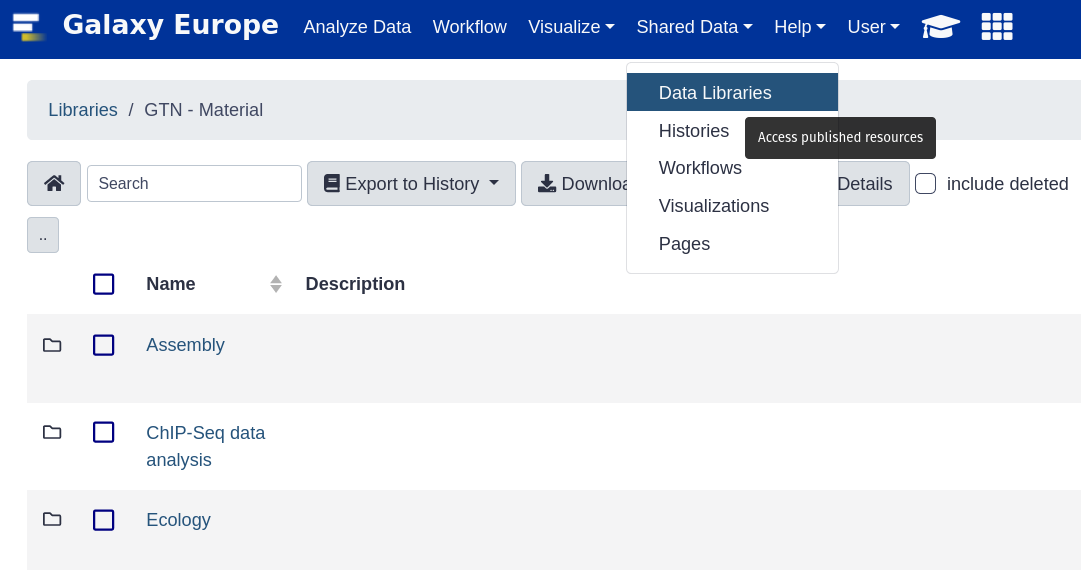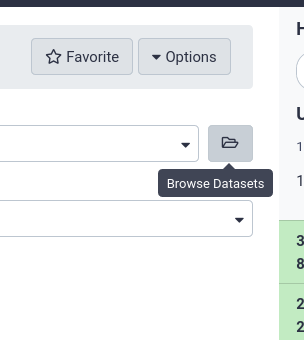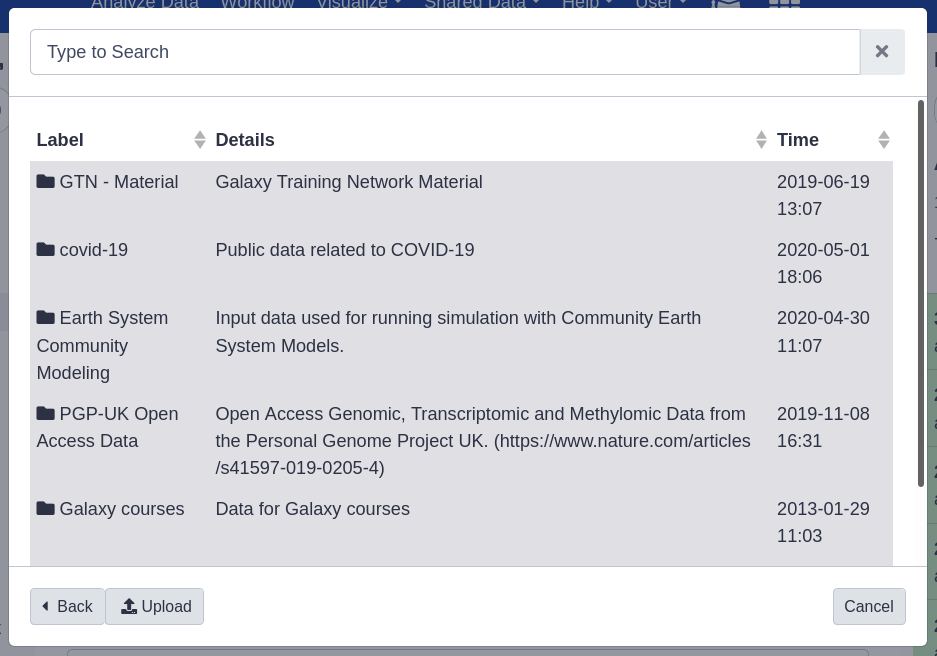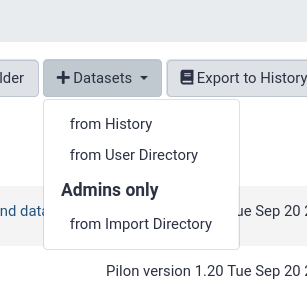name: inverse layout: true class: center, middle, inverse <div class="my-header"><span> <a href="/training-material/topics/admin" title="Return to topic page" ><i class="fa fa-level-up" aria-hidden="true"></i></a> <a class="nav-link" href="https://github.com/galaxyproject/training-material/edit/main/topics/admin/tutorials/data-library/slides.html"><i class="fa fa-pencil" aria-hidden="true"></i></a> </span></div> <div class="my-footer"><span> <img src="/training-material/assets/images/gat.png" alt="page logo" style="height: 40px;"/> </span></div> --- <img src="/training-material/assets/images/gat.png" alt="page logo" class="cover-logo" /> # Storage Management <div markdown="0"> <div class="contributors-line"> Authors: <a href="/training-material/hall-of-fame/natefoo/" class="contributor-badge contributor-natefoo"><img src="https://avatars.githubusercontent.com/natefoo?s=27" alt="Avatar">Nate Coraor</a> <a href="/training-material/hall-of-fame/martenson/" class="contributor-badge contributor-martenson"><img src="https://avatars.githubusercontent.com/martenson?s=27" alt="Avatar">Martin Čech</a> <a href="/training-material/hall-of-fame/hexylena/" class="contributor-badge contributor-hexylena"><img src="/training-material/assets/images/orcid.png" alt="orcid logo"/><img src="https://avatars.githubusercontent.com/hexylena?s=27" alt="Avatar">Helena Rasche</a> <a href="/training-material/hall-of-fame/shiltemann/" class="contributor-badge contributor-shiltemann"><img src="/training-material/assets/images/orcid.png" alt="orcid logo"/><img src="https://avatars.githubusercontent.com/shiltemann?s=27" alt="Avatar">Saskia Hiltemann</a> </div> </div> <div class="footnote" style="bottom: 5.5em;"><i class="far fa-calendar" aria-hidden="true"></i><span class="visually-hidden">last_modification</span> Updated: Apr 6, 2021</div> <div class="footnote" style="bottom: 4em;"><a href="/training-material/videos/watch.html?v=/admin/tutorials/data-library/slides"><i class="far fa-play-circle" aria-hidden="true"></i><span class="visually-hidden">video-slides</span> View video slides for this lecture</a></div> <div class="footnote" style="bottom: 2.5em;"><i class="fas fa-file-alt" aria-hidden="true"></i><span class="visually-hidden">text-document</span><a href="slides-plain.html"> Plain-text slides</a></div> <div class="footnote" style="bottom: 1em;"><strong>Tip: </strong>press <kbd>P</kbd> to view the presenter notes</div> ??? Presenter notes contain extra information which might be useful if you intend to use these slides for teaching. Press `P` again to switch presenter notes off Press `C` to create a new window where the same presentation will be displayed. This window is linked to the main window. Changing slides on one will cause the slide to change on the other. Useful when presenting. --- # Data Libraries - Provide a convenient way to share datasets with users - Great for commonly used datasets (e.g. reference data, GTN tutorial data) .image-75[] ??? - Data libraries provide a convenient way for Galaxy administrators to share datasets with users. - This is ideal for commonly used datasets such as reference data, or data for GTN tutorials. --- # Data Libraries - Access to library datasets: - **Shared Data** menu, browse data and import into history - Directly from tool form .pull-left[ .image-50[] ] .pull-right[ .image-90[] ] ??? - Users can browse these data libraries and import datasets directly into their histories. - Additionally, these datasets can also be selected directly from the tool form. --- # Advantages of data libraries - **Avoid duplication** of data - Does not count towards user's **quota** - Libraries can be shared with all users, or specific groups - **Manage permissions** on library/dataset level using roles and groups. - Admins can *create* libraries. - Ordinary users can be granted permission to *manage* libraries  ??? - Every dataset in the library is stored only once, no matter how many users are using it in their histories. - The data in data libraries does not count against user quotas. - Management of libraries can be delegated to users. - And lastly, libraries can be public, restricted to individuals, or to groups. --- # Importing Data - There are multiple ways to add data to libraries: - From history - From user directory - From import directory (admins only) - From remote source  ??? - Galaxy provides many options for importing data. - You can import data from a history, or from disk. - Importing data on disk is convenient, as Galaxy can recreate the folder structure that is on disk. - Additionally Galaxy can store library data as a symlink. - This prevents needing to copy large shared datasets into Galaxy's own data store. --- # Configuration In `galaxy.yml`: * `user_library_import_dir` * Allows authorized non-administrators to upload a directory of files. * Directory must contain sub-directories named the same as user's email. * Works well in combination with `ftp_upload_dir`. * `allow_path_paste` * Admin-only, allows importing from any path that the Galaxy's user has access to. ??? - If you use old library interface you can also set library_import_dir. - It specifies which folder admins may browse and import from. --- ## Thank You! This material is the result of a collaborative work. Thanks to the [Galaxy Training Network](https://training.galaxyproject.org) and all the contributors! <div markdown="0"> <div class="contributors-line"> Authors: <a href="/training-material/hall-of-fame/natefoo/" class="contributor-badge contributor-natefoo"><img src="https://avatars.githubusercontent.com/natefoo?s=27" alt="Avatar">Nate Coraor</a> <a href="/training-material/hall-of-fame/martenson/" class="contributor-badge contributor-martenson"><img src="https://avatars.githubusercontent.com/martenson?s=27" alt="Avatar">Martin Čech</a> <a href="/training-material/hall-of-fame/hexylena/" class="contributor-badge contributor-hexylena"><img src="/training-material/assets/images/orcid.png" alt="orcid logo"/><img src="https://avatars.githubusercontent.com/hexylena?s=27" alt="Avatar">Helena Rasche</a> <a href="/training-material/hall-of-fame/shiltemann/" class="contributor-badge contributor-shiltemann"><img src="/training-material/assets/images/orcid.png" alt="orcid logo"/><img src="https://avatars.githubusercontent.com/shiltemann?s=27" alt="Avatar">Saskia Hiltemann</a> </div> </div> <div style="display: flex;flex-direction: row;align-items: center;justify-content: center;"> <img src="/training-material/assets/images/gat.png" alt="page logo" style="height: 100px;"/> </div> <a rel="license" href="https://creativecommons.org/licenses/by/4.0/"> This material is licensed under the Creative Commons Attribution 4.0 International License</a>. .footnote[Found a typo? Something is wrong in this tutorial? <br/>Edit it on [GitHub](https://github.com/galaxyproject/training-material/tree/main/topics/admin/tutorials/data-library/slides.html)]